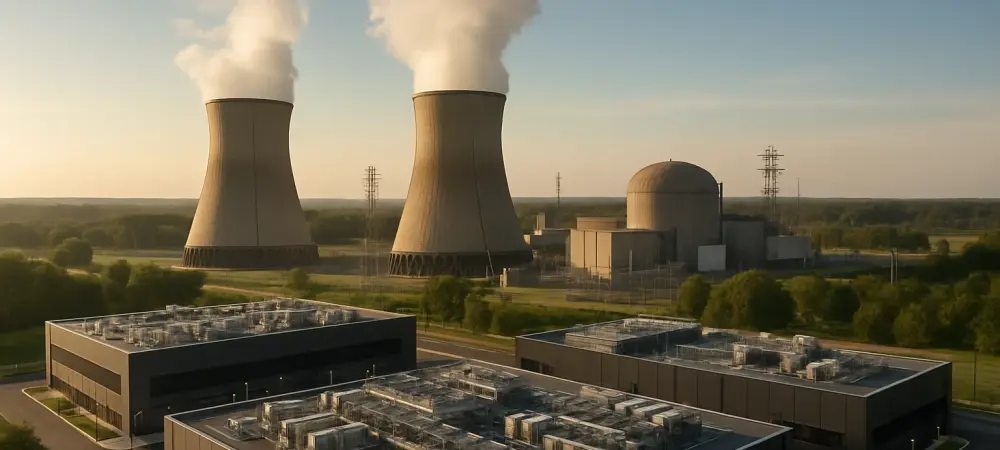In a world driven by vast streams of data and complex calculations, artificial intelligence (AI) data centers stand at the forefront of technological innovation. However, the significant energy consumption required to support these powerful data centers poses a critical question: How can this energy-hungry infrastructure be sustainably maintained? Enter nuclear energy as a viable solution to the problem. Its potential as a reliable power source promises to sustain AI advancements while aligning with global sustainability goals in the current energy landscape, proving critical for the future of technology.
Current Landscape and Emerging Trends
Data and Adoption Trends
The intersection of AI and energy policy has become increasingly prominent, with nuclear energy emerging as a favored option due to its low carbon footprint and continuous power supply capabilities. Reports indicate a sharp rise in AI-driven demands, pushing nuclear power to the spotlight as a sustainable solution. More companies are investing in nuclear technologies, and statistics show a rise in the adoption of nuclear options for powering data centers, which is gradually reshaping the energy policy framework.
As AI continues to burgeon, companies are actively turning to next-generation nuclear technologies that promise efficient and eco-friendly energy sources. Federal mandates are rolling out to expedite nuclear production, spurring technological advancements within this space. The current energy policy landscape highlights increasing investments and interest in nuclear infrastructure, indicative of the growing commitment toward this energy alternative.
Real-World Applications and Case Studies
Prominent tech leaders like Google, Microsoft, and Meta are at the helm, propelling investment in nuclear energy to satisfy their sprawling data needs. These tech giants have initiated various projects designed to harness nuclear power, exemplifying its practical application in real-world scenarios. These initiatives are driving change within the industry, showcasing the capability of nuclear energy to meet demanding AI data center requirements.
Real-world successes in harnessing nuclear power to fuel data centers are paving the path for future developments. Case studies illuminate the effectiveness of nuclear energy in reducing carbon emissions and enhancing energy reliability for AI data centers. These prove beneficial, strengthening the argument for extending nuclear energy usage across multiple sectors and reiterating its practicality and potential in current applications.
Expert Insights and Industry Perspectives
Insights from industry experts reinforce the transformative potential that nuclear energy holds within the AI sector. Thought leaders argue that leveraging nuclear energy could address both environmental goals and increasing digital demands. Lawmakers advocate for investments in emerging nuclear technologies, driven by the potential benefits to national energy security and economic strength.
Expert opinions converge on the idea that the transition toward nuclear energy aligns with both technological advancements and ecological preservation. Although the pathway is fraught with challenges, such as regulatory hurdles and nuclear waste management, the consensus suggests the advantages far outweigh the drawbacks. Experts unanimously agree on the urgent need for streamlined policies to facilitate the embrace of nuclear energy.
Future Directions and Implications
The coming years are poised to witness significant shifts as nuclear energy becomes more deeply integrated into powering AI-driven operations. Innovations in this space could lead to breakthroughs not only in energy efficiency but also in addressing critical environmental challenges. The reliance on nuclear energy could herald an era of reduced greenhouse gas emissions and bolstered energy reliability. While the transition may present regulatory and investment challenges, the potential implications are substantial. Future developments might include broader applications across different industries, a move reinforced by continued advancements in nuclear technology. The impending shifts in energy policy could also reshape how nations worldwide approach sustainable technological growth.
Conclusion and Call to Action
The compelling interplay between AI energy demands and nuclear energy solutions outlines a hopeful trajectory for technological and sustainable development. To this end, a comprehensive focus on policy reforms, technological investments, and international collaborations will be critical. By navigating these challenges wisely, stakeholders could harness nuclear energy’s potential, achieving significant technological advancements while also contributing to global environmental objectives.

